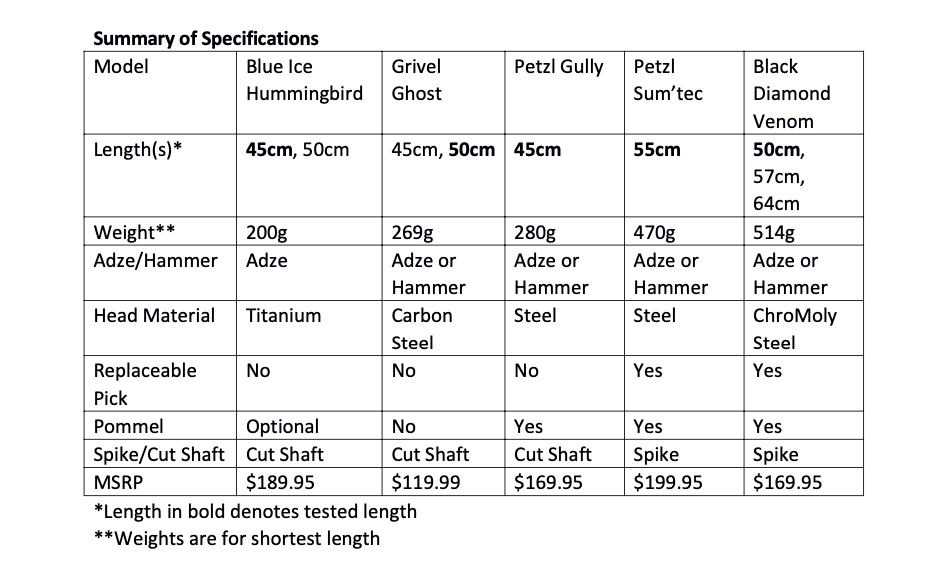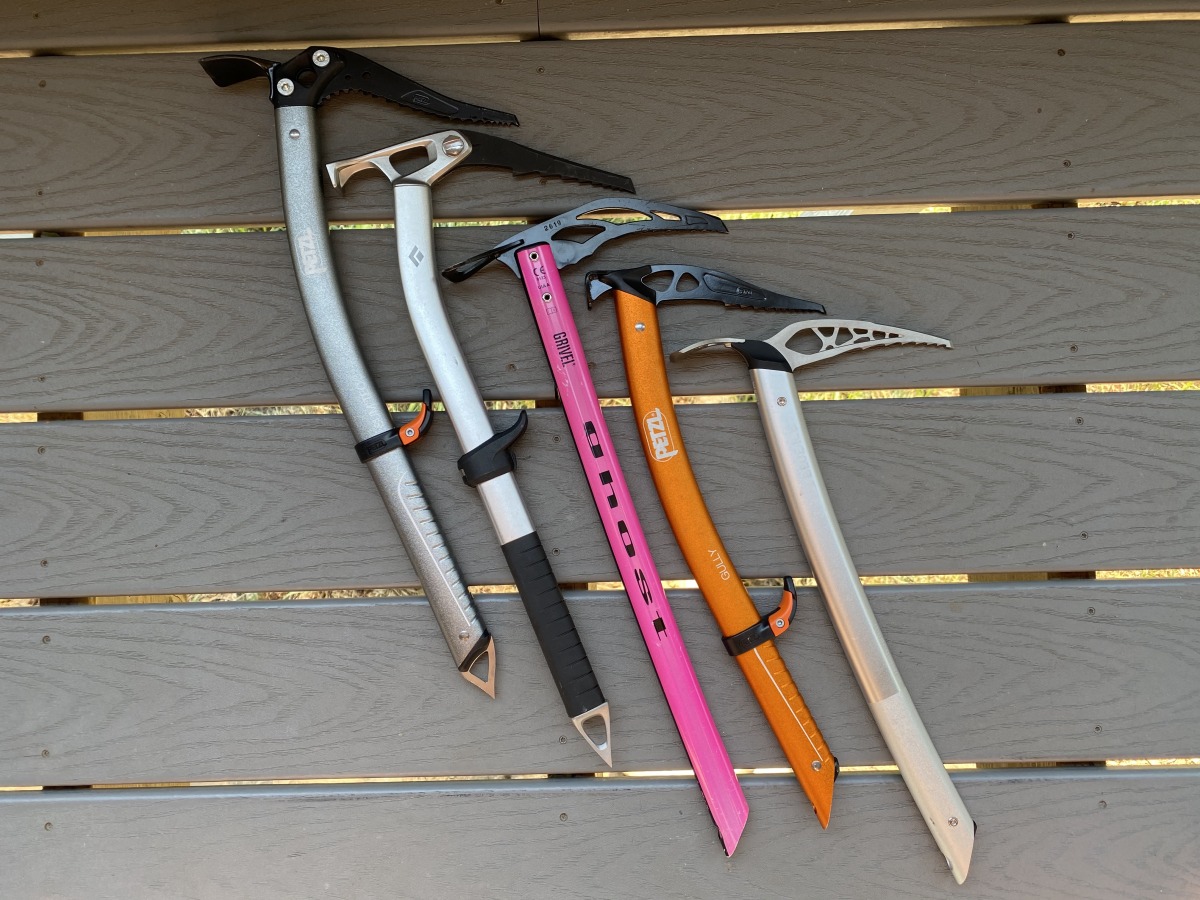
The line up as tested from left to right – Petzl Sum’tec (adze, 55cm), Black Diamond Venom (hammer, 50cm), Grivel Ghost (adze, 50cm), Petzl Gully (hammer, 45cm), Blue Ice Hummingbird (45cm).
Comparison, review, and how to choose
How awesome are you really? How wild can the climb up get, and still be safe for you to descend on skis? These are the fundamental questions one has to honestly ask oneself when selecting an axe for ski mountaineering. Are you going to be climbing pitches of water ice to access hanging snowfields in the Interior Rockies, or are you simply looking for a secure point of contact and the ability to self-arrest on a mellow volcano in the Pacific Northwest? Do you anticipate thousands of feet of frozen front pointing, or do you need a backpack-queen of an axe for spring missions that may or may not be used over the course of the day?
There are no right or wrong answers, only right or wrong tools. A wealth of axes with different relative strengths and weaknesses are available to modern ski mountaineers. The following is meant to guide you towards an appropriate tool (or two) for your chosen level of radness.
Blue Ice Hummingbird
The Hummingbird is a high achieving, purpose built problem solver in the light and fast ski mountaineering category. Two things are immediately apparent when in the presence of this axe: its minimal weight and fine craftsmanship. At 200g (in 45cm length), it is easy to forget that you even have an axe on/in your pack. This is the Holy Grail for non-technical skimo axes; forget it ‘til you need it. The weight savings are largely attributed to an exquisitely crafted titanium head (pick and adze) with all the requisite ‘speed holes.’
In terms of performance, the Hummingbird is a much more capable tool than other ultra light aluminum headed offerings of similar weight on the market. Having never used a titanium headed axe before, I was impressed with its performance in firm placements. Swing weight is understandably minimal, but the pick is durable and dependable when needed. A dual textured zone on the lower shaft gives a modicum of added security when used in traction position. Would I choose this axe to tool through an icy, rocky choke? Nope, but I would absolutely pack it for any frozen diurnal spring mission, high mileage endeavor or pack it on a whim when I am unsure if I will need an axe or not.
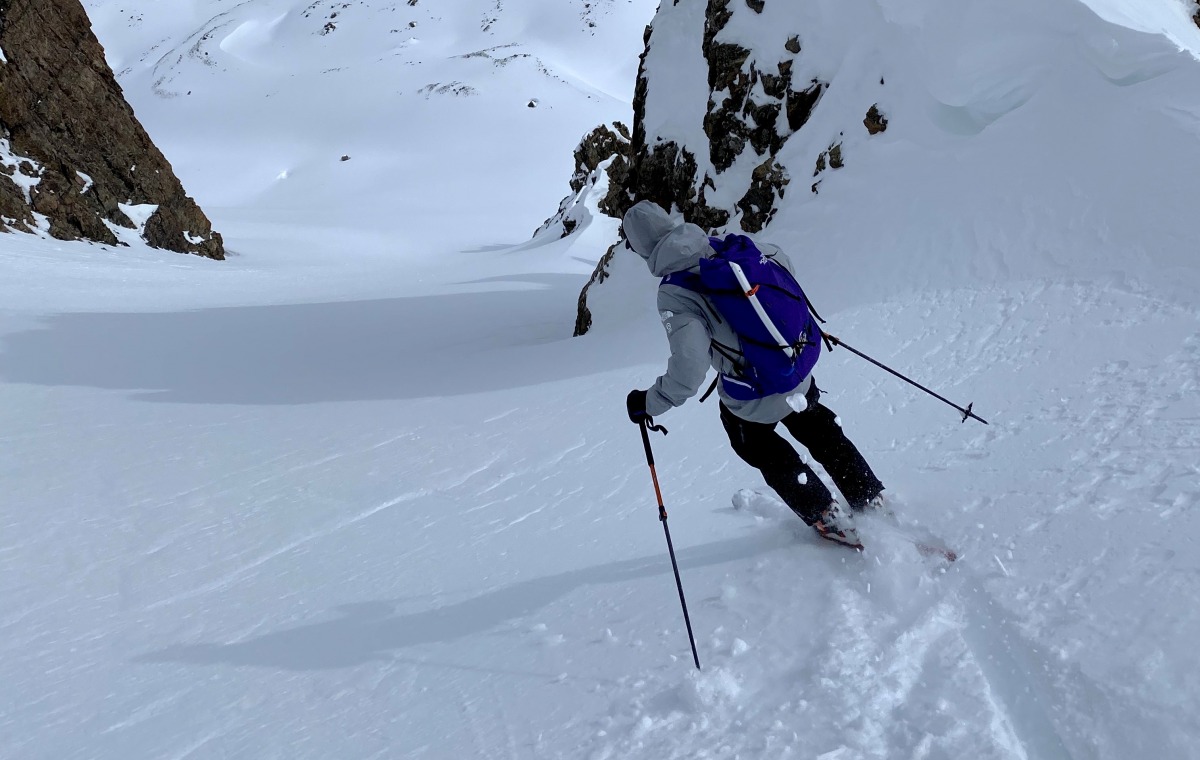
A non-technical axe is an important part of the touring kit during the spring diurnal and should be light enough to be forgotten on the pack. The Blue Ice Hummingbird is as capable as it is light. Photo: Riley Soderquist
The Hummingbird comes with a pick and adze protector. As an axe small enough to be stashed inside your backpack if desired, the protector is appreciated as a means to keep all of your other expensive gear from being chewed up in the Hummingbird’s hungry titanium maw. Speaking of expensive gear, the Hummingbird comes out at 95¢ a gram or $4.22 a centimeter with a $189.95 MSRP. A sliding pommel can be added if desired for $19.95 and Blue Ice even offers customization of up to 20 characters etched on the shaft (insert climbing mantra or name here to keep your friends from stealing this sweet axe) for an additional fee if the axe is ordered from them directly.
On an arcane note, the pick and shaft interact in such a way that is reminiscent of the stylus on a record player. The pick amplifies minor vibrations through the shaft and each placement has a unique ‘note’ determined by the characteristics of the snow/ice/rock surface. Just another fun way to amuse an oxygen starved mind at altitude.
Equally at home in the spandex clad ski-mo racing world (the 50cm length fits ISMF regulations) and the summit driven light-is-right ski mountaineering realm, the Blue Ice Hummingbird is a surprisingly competent featherweight.
Grivel Ghost
The Ghost is a reliable performer that gets the job done right without any sexy materials or fancy bells and whistles. With an MSRP of $119.99, the Ghost can often be found on sale for less than a c-note. I mention this because it is an absolute bargain for a lightweight 269g axe (in 45cm length). With a large carbon steel head and positive curvature, the Ghost may be one of the best of the bunch at traditional self-arrest.
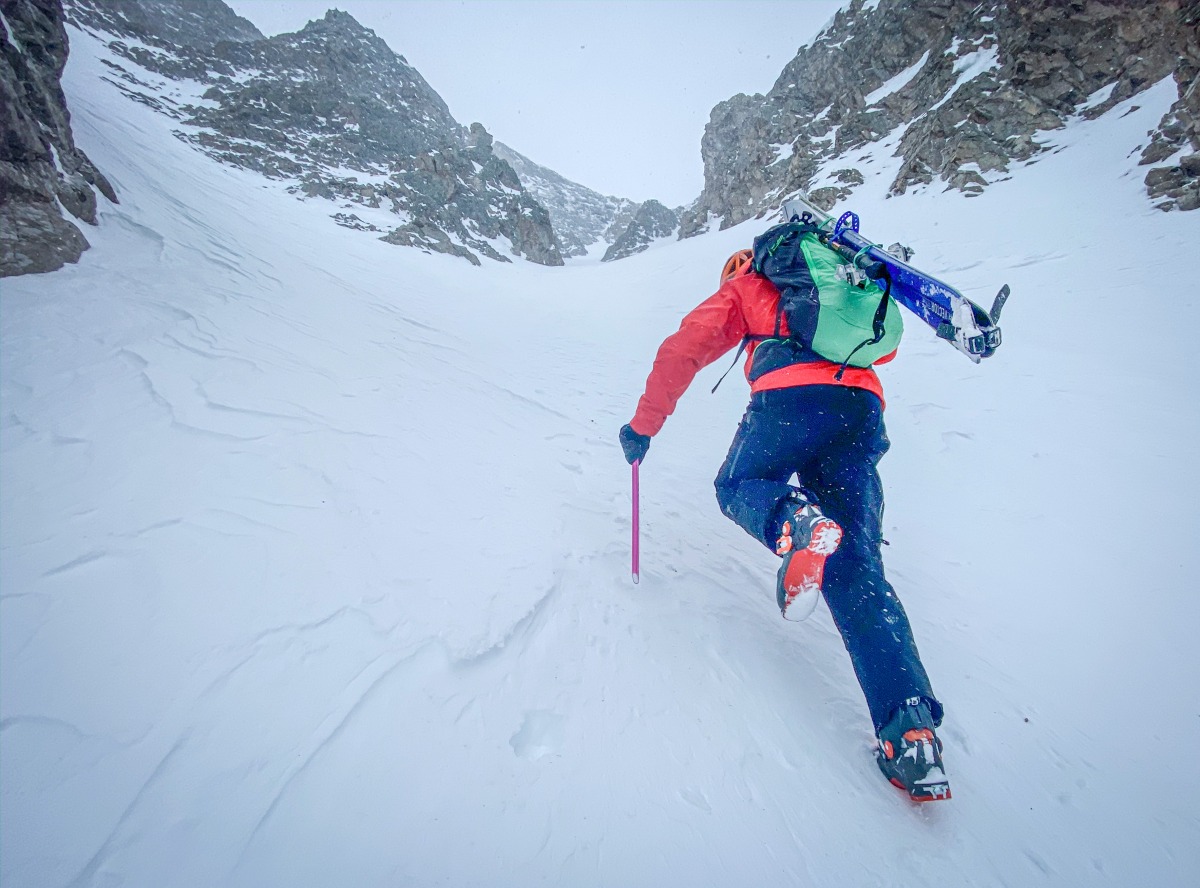
The Grivel Ghost provides no-nonsense steep snow security at a very low price to weight ratio. Photo: Anton Sponar
The Ghost is available in 45cm and 50cm lengths with an adze or hammer, though the large cutout in the adze leaves it wanting when constructing a hasty T-trench in soft or wet snow. The beveled shaft has an ergonomic groove that fit comfortably in my grasp. However, the way that the head of the axe sits high above the shaft makes for a less comfortable hand placement when used in cane, anchor or finger wrapped dagger positions. This is especially apparent when using lighter gloves in the spring.
I have also found that with a foam plug placed roughly 7cm up the shaft, this axe is prone to taking on snow and ice inside the shaft when used in sticky or mixed wet/dry conditions. Not only does this add weight to the tool, it can build up in such a way that if prevents solid contact of the crosscut shaft with the frozen snow surface, requiring a stop-and-fix session of banging it on things. The Grivel Ghost Evo (309g) trades the crosscut shaft for a spike in a similar chassis at a small weight penalty, but solves the snow laden shaft issue.
One cannot talk about the Ghost without at least mentioning that it comes in pink, blue, green and white. Needless to say, our tester was pink. There is something about deploying a pink axe when you are gripped that appeals deeply to me.
The Ghost solves the problem of steep snow security at in a lightweight package with a markedly lower price point than many of its competitors.
Petzl Gully
This is a beautiful contradiction of an axe. With a reverse curved head, low volume tip for ice penetration and a short lightweight shaft, the Petzl Gully packs technical prowess in a very minimal 280g package. It is the best swinging of the three lighter axes in this review by far, and perfectly bridges the real estate between minimalist axes and alpine climbing tools. The included TRIGREST pommel can be adjusted without tools and makes for secure tooling in the middle dagger and traction positions.
The Gully is available with either an adze or hammer, with the adze clocking in at a slightly lighter weight than the hammer. It is available in 45cm length only and will set you back $169. It features a crosscut shaft with a stout plug that keeps the hollow shaft from collecting parasitic snow buildup in sticky conditions. Though the head is optimized for more technical goals, it is not replaceable like some heavier alpine climbing oriented models.
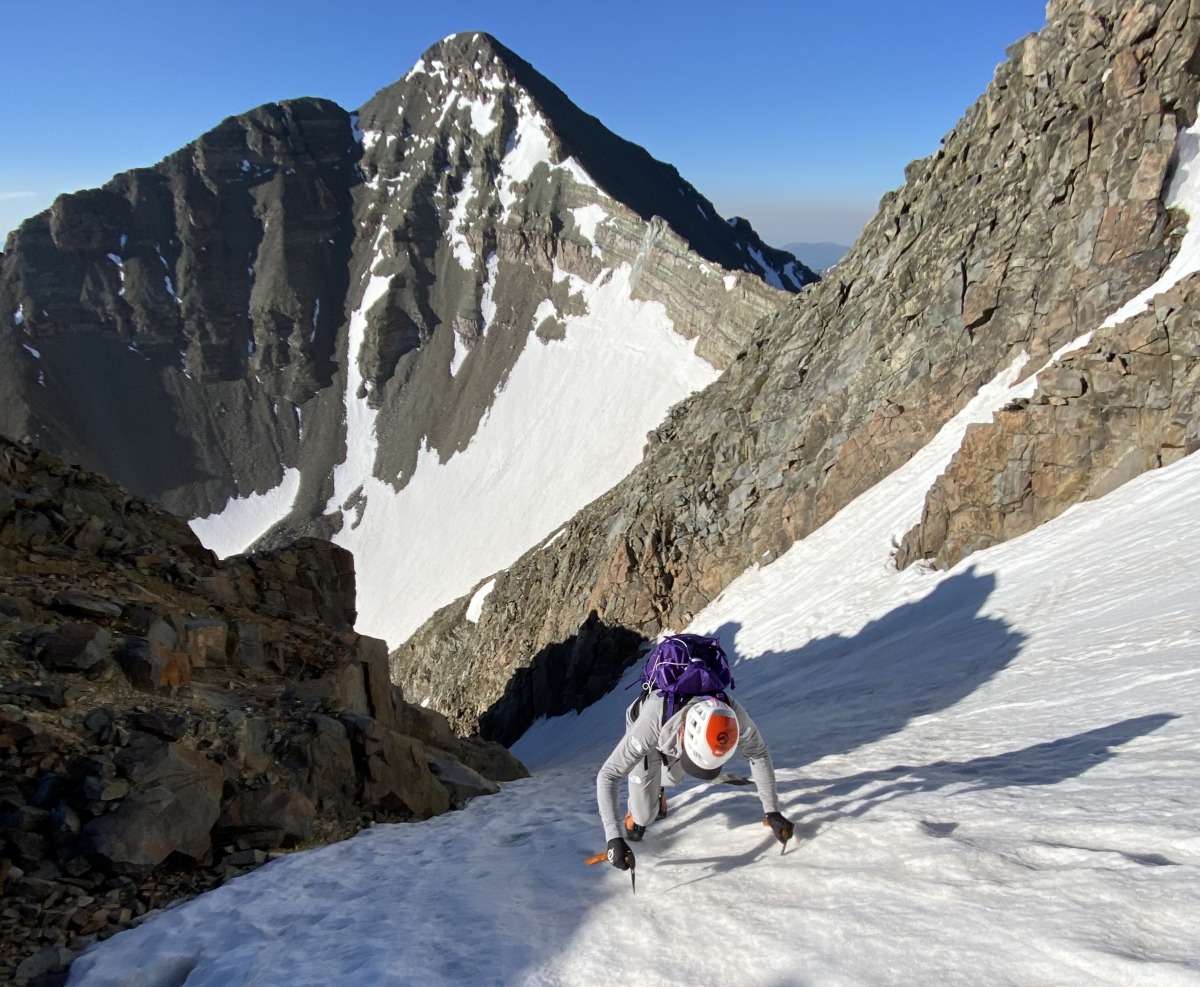
A pair of Petzl Gully tools can solve most alpine snow climbing problems, regardless of whether they are on skis or foot. Photo: Nathan Rowland
With such an aggressive design, the Gully has earned a reputation as a capable light second tool for serious alpinists. A pair of Gully axes should be able to get you up any technical terrain you could possibly want to ski down.
As a six-plus foot-tall human I would love to see this axe come in a longer length. At 45cm with a moderately curved shaft, if the slope you are climbing is not literally in-your-face steep, you are probably not going to make solid contact with it. There are precious few scenarios where I would use this axe in cane position.
If you desire security and an additional point of contact in moderate frozen terrain where a fall could be consequential, this is not the axe I would recommend, but for more technical vertical pursuits it is the best in the lightweight class.
Petzl Sum’tec
As a staple of the alpine climbing world, the Petzl Sum’tec is also a favorite in the high performance ski mountaineering realm. Available in 55cm only (470g), this is a relative heavyweight, but with this weight comes some serious performance. The Sum’tec comes from the manufacturer with the most competent pick for technical ice of all the axes in the review. Additionally, the swing weight of the head is beneficial for firm placements as well as hammering in various forms of protection with the hammer equipped model. The adze is of solid construction with no cutouts and trenches with aplomb when called upon. Additionally, the large curved adze makes for the most comfortable hand placement in self-belay position.
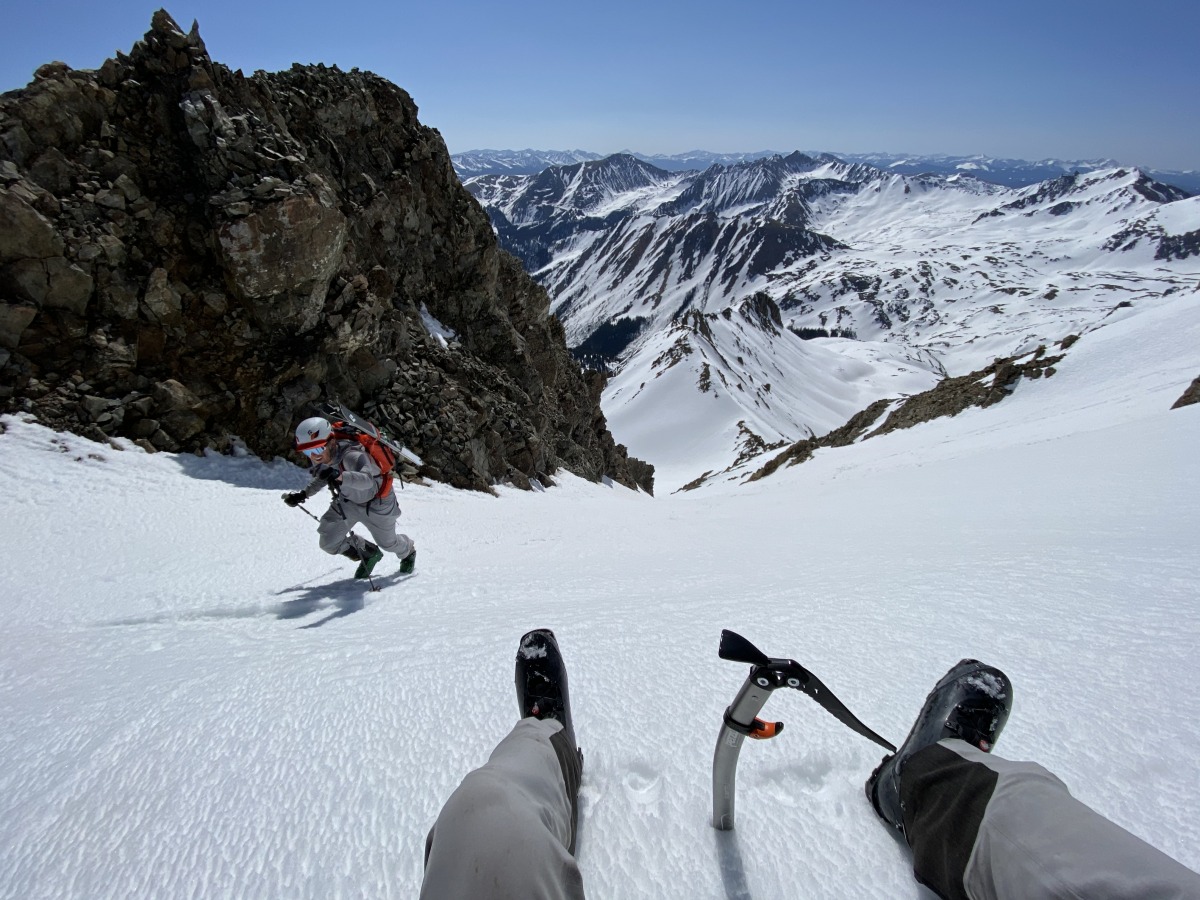
If there were one tool to rule them all, it would be the Petzl Sum’tec. As a standard bearer in the alpine climbing world, this tool has more than enough pedigree to handle any ski mountaineering objectives thrown its way. Photo: Nathan Rowland
Petzl must also be credited with making the effort to get the Sum’tec properly credentialed. With a T-rated pick and shaft, aggressive users can have the confidence to hang and bang on this tool without mercy. Interchangeable picks can be replaced for wear and tear or optimized for the objective so you don’t have to live in fear of dry tooling or rock strikes with this tool. The adze and hammer can also be replaced or swapped as needed.
If you are a ski mountaineer and alpine climber who wants one axe to rule them all, the Sum’tec could be the ticket. Though on the heavier end of what we reviewed in this article, the axe has unlimited capability, customizability and will be happy on your pack and in your hands well after the skis have been hung up in favor of other alpine pursuits.
Black Diamond Venom
The Black Diamond Venom fits squarely in the hybrid space between traditional mountaineering axes and technical ice tools. At 514g (50cm, adze) this crossover axe comes with either an adze or a hammer and features a replaceable pick that is compatible with any pick across the Black Diamond ice tool line. The hammer comes from the manufacturer with the reverse curved Mountain Tech pick for better high angle penetration, while the adze comes with the curved Mountain Classic pick that is more adept at general mountaineering and self arrest.
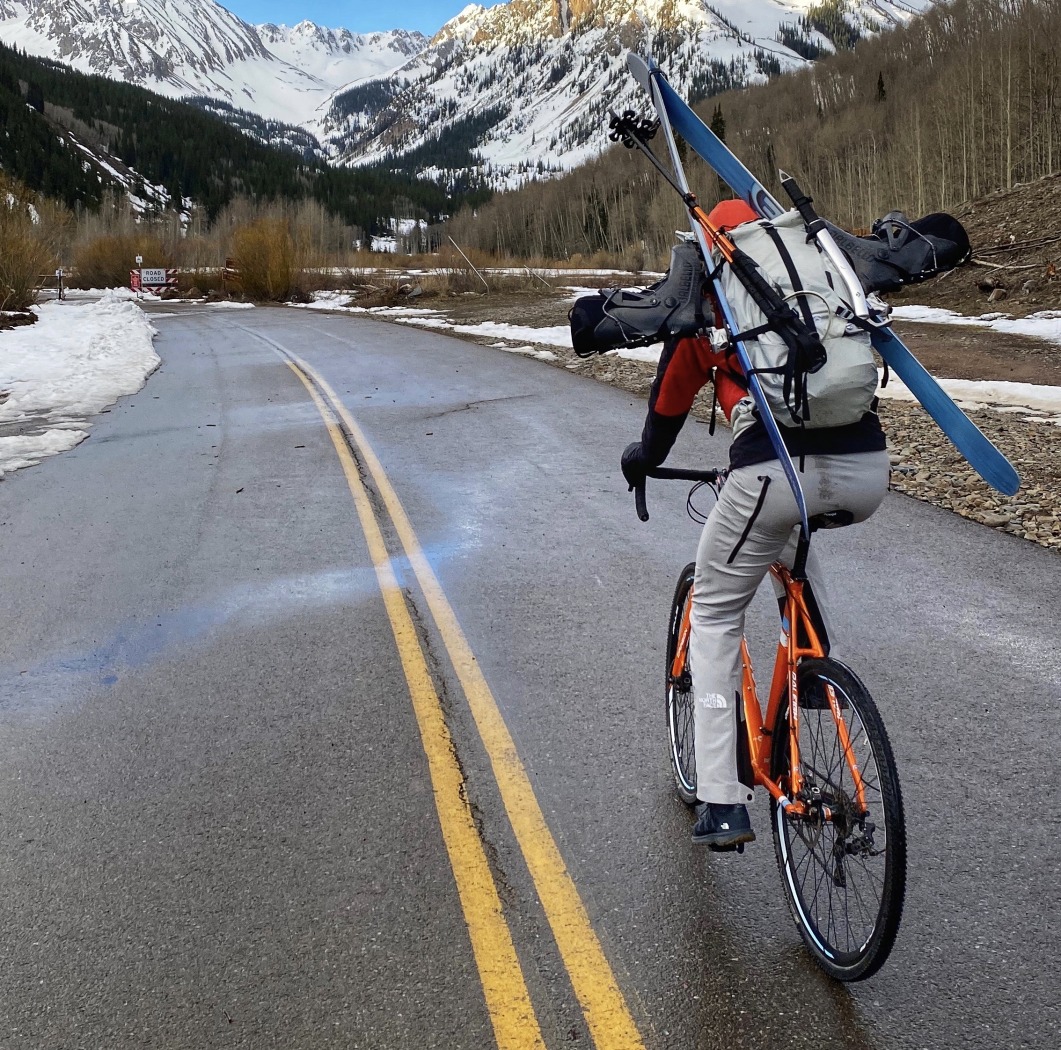
When unknown conditions await, a modular tool like the Black Diamond Venom can seamlessly transition from providing security on snow to navigating more vertical and ice laden terrain. Photo: Scott Mellin
The Venom comes with a ribbed and rubberized grip that adds substantial security with high swinging axe placements as well as insulating your hand from the cold metal of the shaft. An easily adjusted FlickLock pommel adds further versatility by optimizing mid and low shaft hand placements. This is based on the same camming mechanism that has become ubiquitous across the Black Diamond line of adjustable ski poles, but in a much larger and robust format. It was the best pommel in the test in terms of comfort and ease of adjustment.
Notable as well is the availability of the Venom in lengths rarely found on the technical end of the axe spectrum (up to 64cm with an adze). It is well suited for taller folks seeking a hybrid tool as well as those that may mix general mountaineering with more technical terrain in the same mission.
The Venom is a competent do-it-all mountain tool that can transition from moderate snow slopes to easy water ice without missing a beat.
Nate Rowland is a year round guide living with his wife and three young boys at 9,500ft on the fringes of Aspen, Colorado. He is a member of Mountain Rescue Aspen, a Voile Ambassador and works in product testing and validation with The North Face. If encountered in the wild, he responds well to chocolate milk and pickled herring. Follow him at @aspenate.

